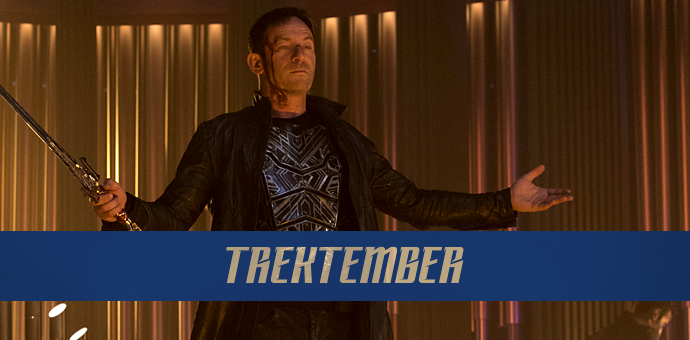“Horror films served as a kind of populist surrealism, rearranging the human body and its processes, blurring the boundaries between Homo sapiens and other species, responding uneasily to new and almost incomprehensible developments in science and the anxious challenges they posed to the familiar structures of society, religion, psychology, and perception.” — David J. Skal, The Monster Show
 The 1930s was the era of horror both on and off the screen. 1931, specifically, saw the second round of banking panics which led the American populace to become even less certain of their economic future than the initial crash in October of 1929. On top of this, the world was on the verge of dealing with the threat of a charismatic, but dangerous, political figure who was seizing power from the Weimar Republic in Germany. Europe and America had just finished fighting “the war to end all wars” and the naive hope for the end of war was about to be deflated with the rise of the Third Reich. The world was stretching against its seams, waiting for the rip to begin.
The 1930s was the era of horror both on and off the screen. 1931, specifically, saw the second round of banking panics which led the American populace to become even less certain of their economic future than the initial crash in October of 1929. On top of this, the world was on the verge of dealing with the threat of a charismatic, but dangerous, political figure who was seizing power from the Weimar Republic in Germany. Europe and America had just finished fighting “the war to end all wars” and the naive hope for the end of war was about to be deflated with the rise of the Third Reich. The world was stretching against its seams, waiting for the rip to begin.
Technologically, society was advancing quickly as well. Locomotives were becoming faster with the invention of the fastest steam locomotive engine, the No. 4468 Mallard, by London and North Eastern Railway. Flying was taking off with the first intercontinental commercial airline flights and Howard Hughes’ record for airspeed at 352 mph in 1935. Color film by Kodak was introduced the same year. By 1939, the concept of nuclear fission was discovered by Hahn, Meitner, and Strassman setting into effect the double-edged sword of clean energy potential and devastating nuclear weaponization which would come into play in the final days of World War II and continues to be a common threat to this day.
 Within the realm of film, however, horror stole the decade. In 1931, alone, were three iconic horror films: Dracula, Frankenstein, and Dr. Jekyll & Mr. Hyde. Followed in the next year by one of the greatest films of the decade, Freaks, a film that, depending on how one watches it, could either be deplorable in how it handles deformity and disability or significantly ahead of its time when looking at representation. Its cast was made up of people with the actual deformities and disabilities which their characters had. Tod Browning’s care for them as people shows forth in the film. Other films were meant to be made by Browning on the subject, but Freaks flopped and there was no interest to put up money for films that showcased people with disabilities. It was too abhorrent for those with “taste” and “class.” Freaks was used as the central example of why a code needed to be enforced on film content even though it was the only film that did not utilize able-bodied actors to play deformed or disabled characters.
Within the realm of film, however, horror stole the decade. In 1931, alone, were three iconic horror films: Dracula, Frankenstein, and Dr. Jekyll & Mr. Hyde. Followed in the next year by one of the greatest films of the decade, Freaks, a film that, depending on how one watches it, could either be deplorable in how it handles deformity and disability or significantly ahead of its time when looking at representation. Its cast was made up of people with the actual deformities and disabilities which their characters had. Tod Browning’s care for them as people shows forth in the film. Other films were meant to be made by Browning on the subject, but Freaks flopped and there was no interest to put up money for films that showcased people with disabilities. It was too abhorrent for those with “taste” and “class.” Freaks was used as the central example of why a code needed to be enforced on film content even though it was the only film that did not utilize able-bodied actors to play deformed or disabled characters.
Along with the horror classics of the 1930s, we saw the rise of two of horrors first icons: Boris Karloff & Bela Lugosi. While Lugosi’s ego would ultimately stifle his career, Karloff would continue to find his way into horror films until his death in 1969. Both men would largely be unable to step out from the shadow of their most iconic roles, Frankenstein and Dracula, respectively. Even with the various versions that have been made of both films and concepts, it is their particular versions that still endure the most prominently in cinematic history.
The 1930s are a difficult period to choose a singular movie to focus in on, so I decided to eschew the classics and find a film starring a well-known name, but in a lesser-known film. So I settled on Boris Karloff’s turn as an Egyptologist who comes back from the dead to seek vengeance on those who plundered his tomb in 1933’s The Ghoul.
 The Ghoul does not break any new ground within its narrative. It is basically The Mummy (1932) with a mystery element in the vein of The Old Dark House (1932). Boris Karloff trades the pieced-together human makeup for the sunken eyed English Egyptologist, Morlant, who has made a career out of stealing artifacts from Egypt for his own collection. One such piece he thinks will give him eternal life if he is buried with it and, in death, offers it to the god, Anubis–the god of embalming and the dead. His plans are thwarted when his servant steals it from the faux Egyptian coffin in which his master lays. Because of this, we are led to believe that Morlant comes back from the dead to seek vengeance on those who try to possess it. Those who worked for him and his heirs gather at his estate and the vengeance begins.
The Ghoul does not break any new ground within its narrative. It is basically The Mummy (1932) with a mystery element in the vein of The Old Dark House (1932). Boris Karloff trades the pieced-together human makeup for the sunken eyed English Egyptologist, Morlant, who has made a career out of stealing artifacts from Egypt for his own collection. One such piece he thinks will give him eternal life if he is buried with it and, in death, offers it to the god, Anubis–the god of embalming and the dead. His plans are thwarted when his servant steals it from the faux Egyptian coffin in which his master lays. Because of this, we are led to believe that Morlant comes back from the dead to seek vengeance on those who try to possess it. Those who worked for him and his heirs gather at his estate and the vengeance begins.
However, before all of the 1930s-style mayhem ensues, there is a quiet scene between Morlant, sick and dying in bed, and his servant speaking about death and god. The servant mentions that one must battle against the flesh and embrace the spirit before dying. Morlant’s reply is this:
“I put my trust in my own gods.”
Narratively, he is putting his trust in the mythology of Anubis and the supposed power of his prized possession as a payment for eternal life. However, in the moment, this speaks so much more loudly to the nature of humanity to put trust in their own gods. Anything can become a god. We can even elevate ourselves to that status and often do most days. The central focus here is on the possession: “my own gods.” The gods that we believe we can barter or bargain with in order to get the desires–no matter how distorted they may be–of our hearts. Morlant wanted to live forever so he got an Egyptian artifact through less than legit ways (according to another character) and tries to pawn it for his life.
 The other characters in the film have varying types of gods they serve. Many serve the god of profit. They want the artifact to gain the power, money and status that it could potentially give them. It causes them to steal from Morlant who stole it from the people of Egypt. The gods that represent the desires of our hearts are shrewd and the cost is evident in the harm it causes to others. The only god that takes the cost upon himself when worshipped is the God of Abraham, Isaac and Jacob. A sacrificing god can take the burden of our worship. All other gods will deplete us in the process. Morlant is burned up in his faux tomb without his key to eternity. Those who survived his savagery were those who recognized the cost and moved away from those faux gods instead of pursuing them doggedly.
The other characters in the film have varying types of gods they serve. Many serve the god of profit. They want the artifact to gain the power, money and status that it could potentially give them. It causes them to steal from Morlant who stole it from the people of Egypt. The gods that represent the desires of our hearts are shrewd and the cost is evident in the harm it causes to others. The only god that takes the cost upon himself when worshipped is the God of Abraham, Isaac and Jacob. A sacrificing god can take the burden of our worship. All other gods will deplete us in the process. Morlant is burned up in his faux tomb without his key to eternity. Those who survived his savagery were those who recognized the cost and moved away from those faux gods instead of pursuing them doggedly.
The Ghoul may be a second-tier horror film for the 1930s, but there are moments that speak louder than those more celebrated films. Boris Karloff plays the all-devouring revenant with aplomb considering it is a significantly different role than Frankenstein’s monster. There is no pity for Morlant by the end like there is for the poor misunderstood monster. He, instead, represents the central fears of the decade and the cost that is required to pursue money and power and status. All things that were plaguing the American landscape during the film’s release. Horror in the 1930s, maybe more than any other decade, was a direct response to the social and cultural context of the day. This is where what we understand as the horror genre began. This is its foundation.


